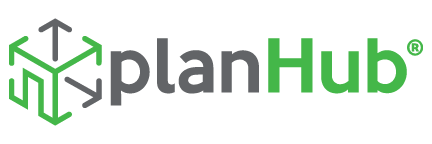Content marketing is a powerful tool for driving brand awareness, generating leads, and nurturing customer relationships. But, how do you know if your efforts are paying off? Measuring your content marketing ROI is crucial for understanding the effectiveness of your strategies and making data-driven decisions. In this blog post, we’ll dive into 8 advanced metrics and reporting techniques to help you track and optimize your content marketing ROI. Ready to level up your content game? Let’s go!

Why Measuring Content Marketing ROI is Important
Measuring content marketing ROI helps you:
- Understand which strategies work and which need improvement
- Allocate resources effectively
- Make informed decisions about your content marketing efforts
- Justify content marketing expenses to stakeholders
Advanced Metrics for Measuring Content Marketing ROI
Let’s dive into the advanced metrics you need to track for a comprehensive understanding of your content marketing ROI:
3.1. Customer Acquisition Cost (CAC)
CAC is the cost of acquiring a new customer through your content marketing efforts. It’s calculated by dividing your total content marketing expenses by the number of new customers acquired. Keeping track of your CAC helps you evaluate the efficiency of your content marketing campaigns and optimize your budget.
3.2. Customer Lifetime Value (CLV)
CLV measures the total revenue a customer generates for your business over their lifetime. Compare your CLV to CAC to determine the long-term profitability of your content marketing efforts. A high CLV:CAC ratio indicates a healthy ROI, while a low ratio signals a need to revisit your content marketing strategies.

3.3. Content Engagement Metrics
Engagement metrics, such as average time on page, bounce rate, and pages per session, reveal how users interact with your content. High engagement rates signal that your content resonates with your audience, while low engagement rates indicate a need for improvement.
3.4. Conversion Rate
The conversion rate measures the percentage of users who complete a desired action, such as signing up for a newsletter or making a purchase, after engaging with your content. This metric is crucial for determining the effectiveness of your content in driving conversions.
3.5. Social Media Metrics
Track social media metrics such as shares, likes, and comments to gauge the popularity and reach of your content. High social media engagement can boost brand awareness and attract more potential customers.
3.6. Organic Traffic Growth
Organic traffic growth is a key indicator of the success of your SEO and content marketing efforts. Monitor the increase in organic visitors to your website to evaluate the performance of your content in attracting and retaining users.
3.7. Backlinks
Backlinks, or inbound links from other websites, contribute to your website’s domain authority and SEO rankings. Track the number and quality of backlinks to assess the credibility and authority of your content.
3.8. Assisted Conversions
Assisted conversions measure the indirect impact of your content marketing efforts on conversions. By analyzing the user journey, you can identify content pieces that contribute to conversions, even if they aren’t the final touchpoint.
Reporting Techniques to Track ROI
To effectively measure and report your content marketing ROI, consider these advanced reporting techniques:
4.1. Google Analytics Custom Dashboards
Create custom dashboards in Google Analytics to monitor your most important content marketing metrics. This will give you a comprehensive overview of your content performance and help you identify trends and areas for improvement.

4.2. Attribution Modeling
Attribution modeling helps you understand the role each marketing channel plays in conversions. By assigning credit to different touchpoints in the customer journey, you can gain a better understanding of how your content marketing efforts contribute to your overall ROI.
4.3. Tracking UTM Parameters
UTM parameters are tags added to your URLs to track the performance of your content in various marketing channels. Use UTM tracking to monitor how users are engaging with your content and which channels are driving the most conversions.
Pro Tips for Optimizing Content Marketing ROI
- Create high-quality, engaging, and valuable content for your target audience
- Optimize your content for SEO and use relevant keywords strategically
- A/B test different content formats, headlines, and CTAs to find what resonates best with your audience
- Repurpose and update your existing content to maximize its impact and reach
- Leverage social media, email marketing, and other channels to promote your content and increase its visibility
Conclusion
Measuring and optimizing your content marketing ROI is essential for making data-driven decisions and ensuring your efforts are paying off. By tracking advanced metrics and utilizing reporting techniques, you can gain valuable insights into your content performance and improve your strategies for better results.
Call to Action
Ready to take your content marketing to the next level? Request a consultation to improve your digital marketing or subscribe to our newsletter for more digital updates and insights!
Don’t forget to visit d-dat.com for more useful and free content!







